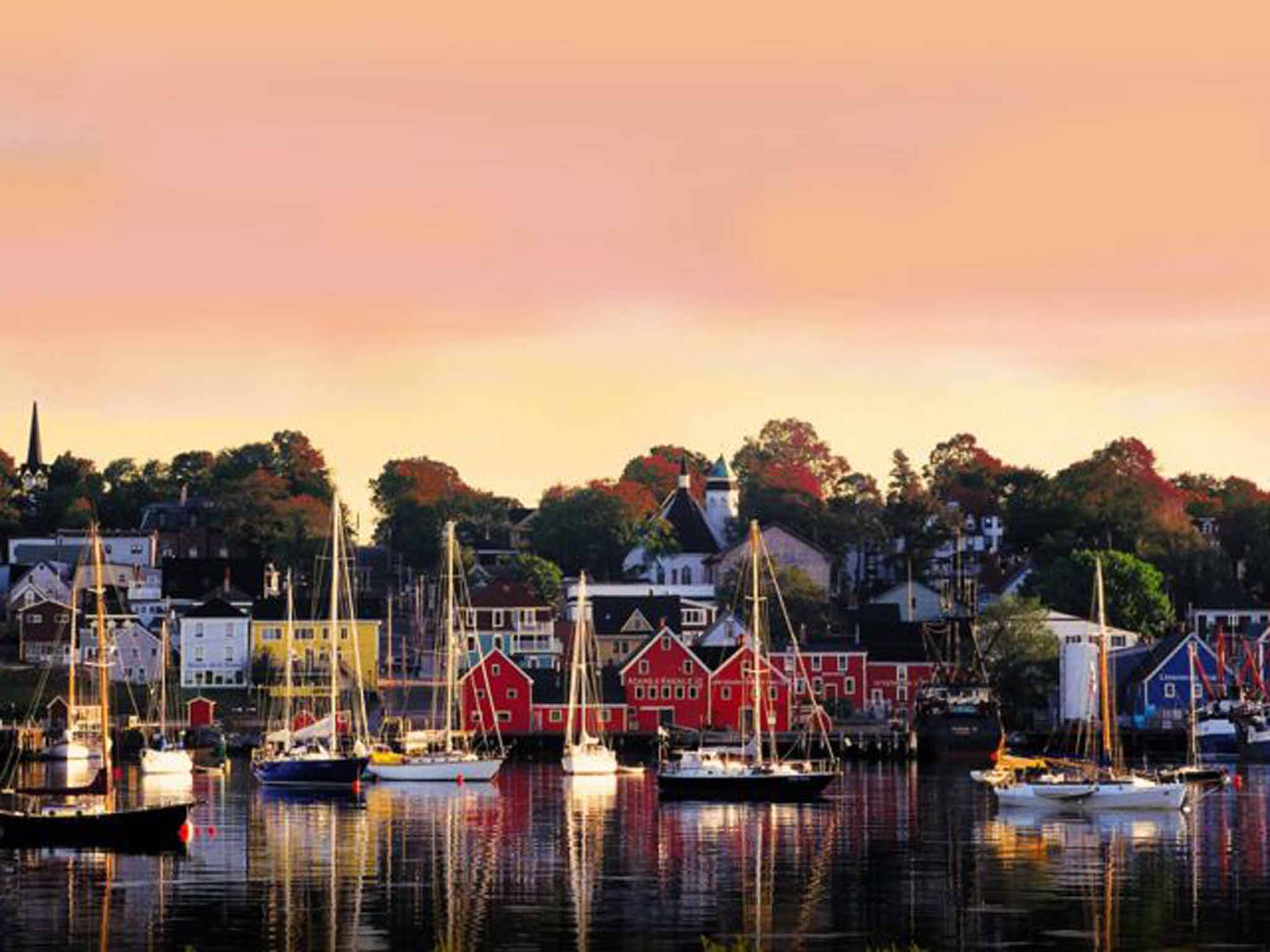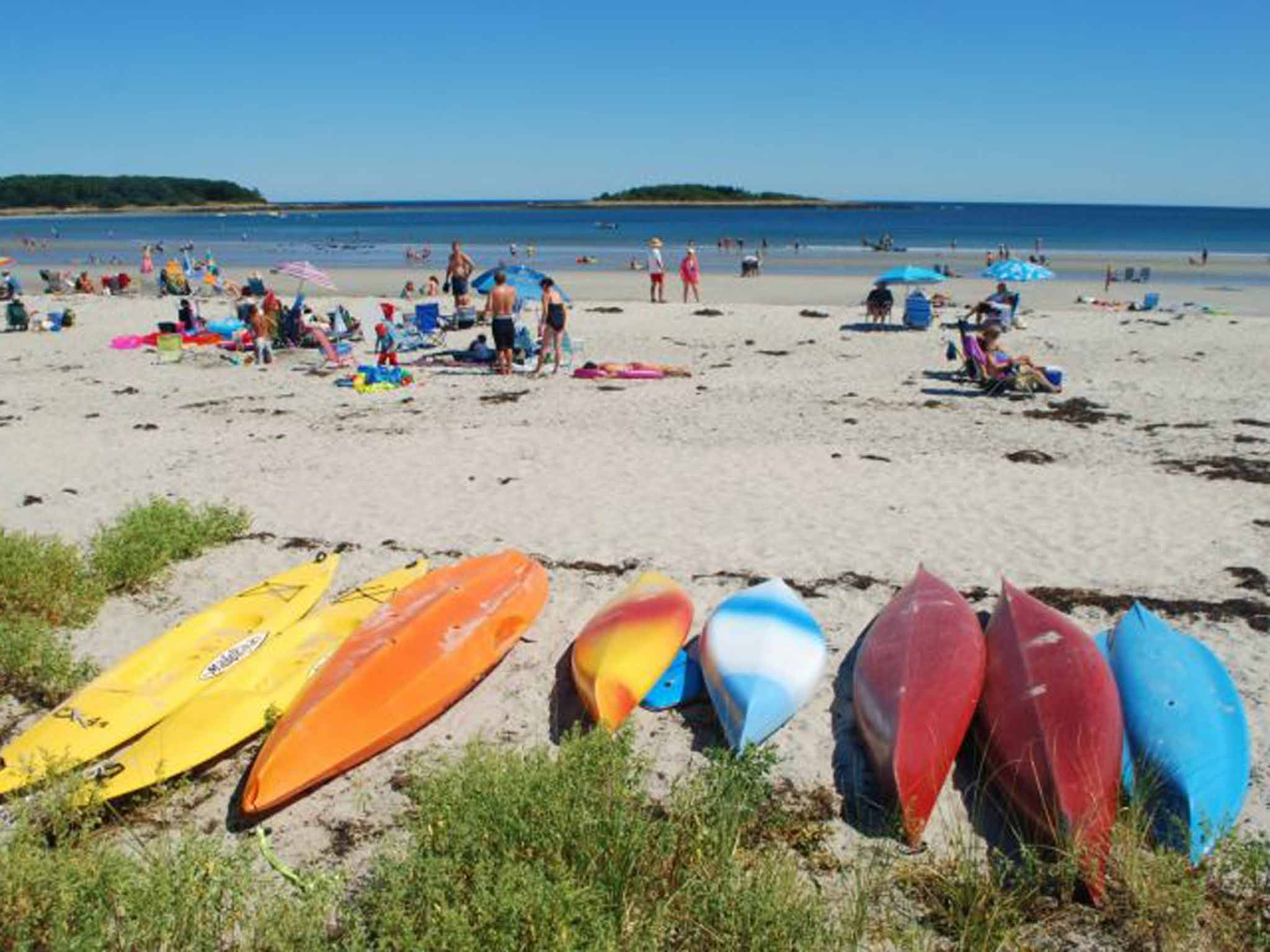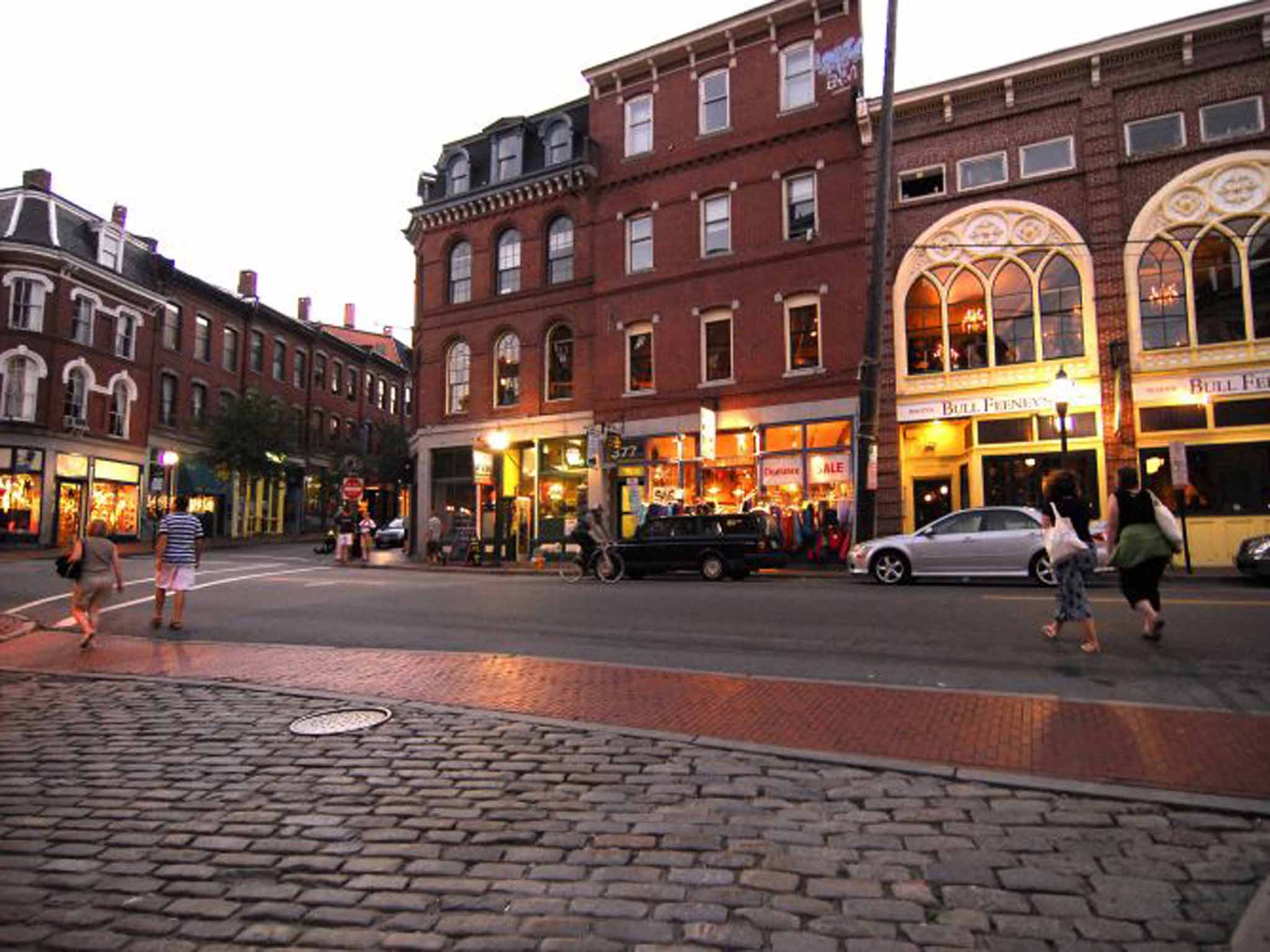New England and Nova Scotia: Explore both destinations on a twin-centre trip
As with their Old World originals, these are two places that are best combined, says Simon Calder

Your support helps us to tell the story
From reproductive rights to climate change to Big Tech, The Independent is on the ground when the story is developing. Whether it's investigating the financials of Elon Musk's pro-Trump PAC or producing our latest documentary, 'The A Word', which shines a light on the American women fighting for reproductive rights, we know how important it is to parse out the facts from the messaging.
At such a critical moment in US history, we need reporters on the ground. Your donation allows us to keep sending journalists to speak to both sides of the story.
The Independent is trusted by Americans across the entire political spectrum. And unlike many other quality news outlets, we choose not to lock Americans out of our reporting and analysis with paywalls. We believe quality journalism should be available to everyone, paid for by those who can afford it.
Your support makes all the difference.For years, the top-right hand side of North America has been annoyingly difficult and expensive to reach – flying to the Pacific Coast has usually offered more choice and lower fares, despite being twice as far. But this summer, the happy convergence of a new no-frills transatlantic link from old Scotland to Nova Scotia and a heavily subsidised ferry link onwards to Maine means you can explore and compare these most appealing locations.
Few people go to Atlantic Canada for city life, though if you were to make that interesting decision then Halifax would be the only choice. The port presides over the south coast of Nova Scotia, and has one of the finest natural harbours in the world. Its highest point is occupied by the Citadel, a fortress now staffed by actors pretending to be British Redcoats. Their cannon, fired each day at noon, reverberates across the harbour, a quotidien reminder to the French about who prevailed in the colonial struggle for Canada.
The skirts that unfurl from the Citadel are dotted with government buildings which look grandiose in granite and are lined with sturdy red-brick terraces and are studded with handsome churches. Terraced streets ripple down to the waterfront, where a boardwalk provides an excellent view of the harbour which has welcomed a million new Canadians. The human stories of immigrants escaping poverty or oppression are told with intimacy in the newly invigorated Pier 21 Museum which occupies the building where those new arrivals were (mostly) welcomed.
The Canadian dollar has fallen sharply in the past few months, so life is cheerfully affordable. The adjacent Garrison brewpub, just inshore, will sell you a sample of its extensively tasty repertoire for the equivalent of £1 for a very generous shot.

Halifax has been a witness, and a location for, too many tragedies. The Maritime Museum is full of reminders about the many thousands who perished on transatlantic voyages in search of a new life. The replica of a deck chair from RMS Titanic – which invites visitors to pose for photos, as if aboard the doomed ship – is in questionable taste but very popular. The liner was not bound for Halifax, but many of the more than 1,500 dead were brought ashore in the port and buried at Fairview Cemetery, on a hill above the harbour. Here, the tragedy is handled with respect and compassion.
Close by is the Hydrostone neighbourhood, hurriedly built from compressed cement after the Halifax Explosion in 1917 obliterated much of the city. A French munitions ship blew up – the biggest blast in the pre-nuclear age, killing 2,000 people living and working around the harbour.
Halifax's £11-a-night city-centre youth hostel is a rambling 18th-century property with a welcoming lounge filled with travellers who offer advice for the newly arrived – mostly to the effect of "get out of town". Happily, from a small city in a vast country, that only takes about 10 minutes.
The coastline that curls westwards from Halifax comprises a series of images that collectively create a sense of maritime bliss; every curve in the road reveals another view of the pine-flanked shoreline crumbling into steely water that is speckled with islands. Tiny communities huddle around ports denoted from a distance by church spires; close up, the sombre beauty is enlivened by lobster boats, and floats, in primary colours.
Yet the coast is haunted by death at sea. Until Titanic, this ocean's worst disaster was the April 1873 sinking of SS Atlantic – a liner steaming for New York that ran short of fuel, and tried to put into Halifax during a terrible storm. She struck rocks and, despite the frantic efforts of the tiny fishing community of Terence Bay, 562 of the passengers died. They are honoured still in the quiet churchyard where they share a mass grave.
Around the headland, Peggy's Cove commemorates the passengers and crew of a modern transatlantic disaster: the 1997 crash of Swissair Flight 111 en route from New York, in which 229 people died after fire broke out on board. Yet it is here that the rewards, rather than hazards, of travel are most vivid. The modest good looks of the port, and its proximity to Halifax, make Peggy's Cove a favourite on the cruise-excursion circuit. But roam across the timeworn granite boulders around the lighthouse, and the setting trumps the crowds.
If you like the reassurance of heritage badged by Unesco, visit the port of Lunenburg. In the race to populate and defend Nova Scotia, the British imposed a grid plan and a contingent of immigrants from the Rhineland on a placid hillside. Largely ignored by the rest of the world, this Anglo-German community acquired World Heritage status because little has changed in three centuries – apart from some racy repainting along King Street, now known as Unesco Fresco.
"Eat at the Bait Shack," was the instruction from everyone I met. The fish and chips are as good as anywhere, and view from the deck overlooking the water unbeatable. Later, from the bath of my room at the Pelham House (one of many handsomely preserved B&Bs), I watched the sun set over the harbour. The experience was bettered only by the blueberry pancakes served next morning by the hosts, David and Michael.
Working ports have their own appeal, notably the opportunity for onward travel. A new reason to travel to Yarmouth, at the far end of Nova Scotia is a big, new and stylish car ferry: the Nova Star. I've never been on a ghost ship, but the vessel was a pretty good approximation. She was barely a quarter full, and that was with the added help of a coachload of American tourists from upstate New York. The link is controversial, especially among the Nova Scotia taxpayers who are bankrolling it.

Pricing the ferry so that passengers pay something like a realistic fare means that many motorists will simply drive between Nova Scotia and Maine, reckoning that 10 hours' on the highway plus $50 to $100 in fuel is a better deal than more than $400 for the ferry. But for international visitors keen to combine both Nova Scotia and Maine, the one-way fare of $124 (£81) is a bargain. Sailing west by day, or east by evening, you get to thread through the islands that decorate Casco Bay – the implausibly pretty prelude to Maine's biggest (you might say only) city.
Portland is Halifax's US cousin, and has the same redbrick homes and warehouses, many converted to restaurants and bars. Its prize attraction is the Victoria Mansion, a family home created by a rich hotelier from the best materials that America and Europe could offer. Somehow the property dodged refurbishment or demolition, and its glittering decor survives as a vivid snapshot of late 19th-century ambition.
Late 20th-century ambition is depicted in more sinister form just down the coast from Portland in Kennebunkport, where the Bush complex is heavily guarded. The first President George Bush took refuge from the White House here, and it remains a prize possession of the family. On the shore that looks across to the inaccessible peninsula, someone has created a shrine.
Say what you like about the family, but they have excellent taste in locations. Kennebunkport combines dense woodland with deep inlets from the ocean, and the un-guarded parts of the town have a handful of upmarket resorts for well-heeled New Englanders.
The Maine coast is also a draw for blue-collar workers from Boston to Burlington, and they converge on the state's version of Blackpool just a few miles from the White-House-on-Sea: Old Orchard Beach, or OOB for short. A proper old-style fairground, complete with wooden roller-coaster, and a creaky old pier selling 99-cent hot-dogs and cotton candy (candy floss), provides unremitting fun. For some remission just head two miles up the coast to Pine Point, a promontory with a beach, a lagoon and succulent lobster served in industrial quantities at the Clambake.
The crustacean is on sale this summer in some unusual Maine venues. Some of the state's branches of McDonald's have started serving a $10 (£7) lobster roll as a premium addition to the more familiar menu. It's not called a Big Snap, but it should be.
Do you want the great outdoors with that? In Freeport, it's yours for the taking. Since 1951, the L L Bean store has been selling outdoor gear 24 hours a day, throughout the year. I'm not sure how fast the backpacks and snowmobiles are shifted at 3am on Christmas morning, but in summer the store is at the hub of that strange American phenomenon, a town devoted to retailing.

Since I feel as uncomfortable with fashion as a lobster out of water, I feared that I might loathe the place. But then I discovered the L L Bean Outdoor Discovery Schools: heavily subsidised introductions to a range of activities. I stayed vertical during the paddle boarding class on a nearby river, and was occasionally on target on archery range (aiming at paper bulls-eyes, not big game).
A more familiar activity took me by bike through the fields to the nearby college town of Brunswick. Away from the superstores, rural Maine felt the ideal antidote to city life: meadows rolling down to the shore, where the ocean breeze dabbed away the summer heat. Then I pedalled past two roadside signs that seemed to sum up American society.
"God doesn't give us what we can handle," read the slogan outside a church. "God helps us handle what we are given." And what might one be given? A weapons shop boasted: "We buy, sell or trade used guns." For those who prefer their firearms new, L L Bean has plenty on offer – a strange conflict for an organisation that strives to celebrate life.
America's Atlantic fringe has an unwelcome edge that Canada has eluded. But as with the old versions of New England and New Scotland, these nations are greater together than the sum of their parts – as you can still discover this happy summer.
Getting there
WestJet (00800 5381 5696; westjet.com) flies daily from Glasgow to Halifax. Air Canada flies there from Heathrow, and Air Transat flies from Gatwick.
Nova Star Cruises (001 866 403 7666; novastarcruises.com) sails daily between Yarmouth, Nova Scotia, and Portland, Maine. The one-way fare is US$124 (£81).
Getting around
The only car-rental firm with a depot in Yarmouth, Nova Scotia, is Enterprise (001 902 742 5559; enterprise.com). Simon Calder paid C$442 (£221) for a week's rental, including the drop charge between Yarmouth port and Halifax airport.
More information
Bradt Guide to Nova Scotia; Lonely Planet's New England (both £15.99).
Join our commenting forum
Join thought-provoking conversations, follow other Independent readers and see their replies
Comments